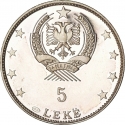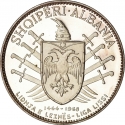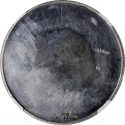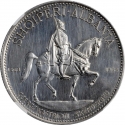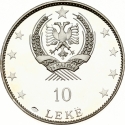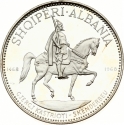You are about to finish your registration. Please check your mailbox (including spam folder). There should be a letter with a confirmation link. Check setting to make sure that your e-mail address is correct.
Send letter againDescription
Zog I of Albania (1895–1961), born Ahmet Zogu, was the King of Albania from 1928 to 1939 and previously served as Prime Minister (1922–1924) and President (1925–1928). Rising to power through political maneuvering and military support, he declared himself King in 1928, establishing a monarchy with strong central authority. His reign focused on modernization, strengthening the army, and economic reforms, but he relied heavily on Italian financial and military aid, which eventually led to Albania’s increasing dependence on Mussolini's Italy. In 1939, Italy invaded Albania, forcing Zog into exile. He spent the rest of his life in various countries, including Britain, Egypt, and France, where he died in 1961.
Obverse

|
Depicts a bearded bust of Skanderbeg right. Designer´s signature below. G·KASTRIOTI · SKANDERBEGU |
|---|---|
Reverse

|
Depicts the Lion of Saint Mark dividing value, country name above, mintmark and date below. ALBANIA - SHQIPNI |
| Edge |
20 Franga Ari
KM# 12 Fr# 4-6
Related coins
500th Anniversary of Death of Skanderbeg
500th Anniversary of Death of Skanderbeg
500th Anniversary of Death of Skanderbeg


